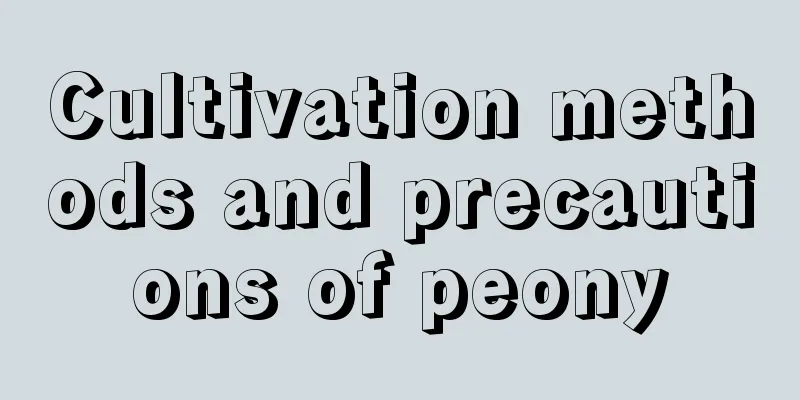Cultivation methods and precautions of peony

1. Maintenance methods1. Temperature: It has a very strong adaptability to temperature. In winter, it can withstand temperatures as low as minus fifty degrees Celsius. In summer, if the temperature reaches 38 degrees, it will not affect its normal growth and flowering. However, the most suitable temperature is between fifteen and twenty-five degrees. 2. Light: It prefers sunlight. Generally speaking, when it is growing fast and before and after flowering, it needs to be placed in a sunny location so that it grows well and blooms more. However, it needs to be placed in a shaded location in summer, as too strong light will burn its leaves. 3. Watering: It likes moisture, but too much waterlogging will have adverse effects. During the growing and flowering periods, it needs to be slightly moist. However, water must not accumulate and drainage is required during the rainy season. Furthermore, when the temperature is low, do not water too much. 4. Fertilization: Pay attention to the richness of nutrients. Generally speaking, the best ratio of nitrogen, phosphorus and potassium is two to two to one. In addition, it is best to water after fertilizing. 2. Breeding techniques1. Reproduction: The material used for the reproduction of peony is its foot bud root segment. The foot bud refers to its white fleshy rhizome. These can be found in the soil layer thirty centimeters below the ground. It can be done in spring and autumn, and after digging them out, they can be planted. Some base fertilizer needs to be mixed into the substrate in advance. After planting, keep the temperature suitable and it will germinate in about ten days. 2. Pruning: The most important thing is pruning after flowering. Because the dry branches left after flowering will be very long, affecting subsequent growth. In addition, diseased, insect-infested, and redundant lateral branches need to be pruned in time to prevent them from affecting the overall health. 3. Problem diagnosis and treatment1. Disease: There may be the harm of "root rot", which is most likely caused by too much watering. It can be controlled by carbendazim and oxadiazon. There are also "leaf spot disease" and "brown spot disease", which can be treated with chlorothalonil. 2. Pests: In summer, there are many pests. For example, there are "termites", "grubs", "leaf rollers", etc. You can spray some insecticides regularly for prevention and control. IV. Other issues1. Toxicity: It is not poisonous and does not emit harmful gases. 2. Can it be raised at home? It has good ornamental value and is a good choice for home decoration. |
<<: Cultivation methods and precautions of blood-replenishing grass
>>: Cultivation methods and precautions of Andrographis paniculata
Recommend
The correct way to fertilize watermelon
The quality and yield of watermelon are affected ...
What is the cultivation method of horsetail flower
1. Soil When breeding, you need to use a sand bed...
Carrot transplanting precautions and key points of carrot cultivation methods and techniques
The carrot seedling period is relatively long, ge...
Cultivation methods and precautions of azalea
1. Environment It is best to grow azaleas in both...
The efficacy and function of lantern fruit
1. Anti-inflammatory Lantern fruit has anti-infla...
How to make hyacinth grow faster? How to deal with it if it grows too tall?
1. How to grow fast 1. Adequate light: For most p...
Gourd planting time and method
Gourd planting time Golden pumpkin prefers a warm...
What to do if the Brazilian iron withers
Replace the potting soil When growing ornamental ...
The difference between hollow bubble and raspberry
Hollow bubble The hollow bubble is also known as ...
The difference between white magnolia and purple magnolia
1. Flowers When we hear the name, we can understa...
How many times a year should Isatis root be harvested?
Isatis root is a commonly used Chinese medicinal ...
The main value of climbing roses
Greenery Because the stems and leaves of roses ar...
How many kilograms of rapeseed are generally produced per mu? What is the yield per mu and the profit?
Rapeseed yield per mu The yield of rapeseed per m...
How to grow big-headed orchid
1. Breeding environment 1. Soil: To grow big-head...
What soil is suitable for growing crabapples?
Begonia soil Begonia likes acidic soil. If alkali...









